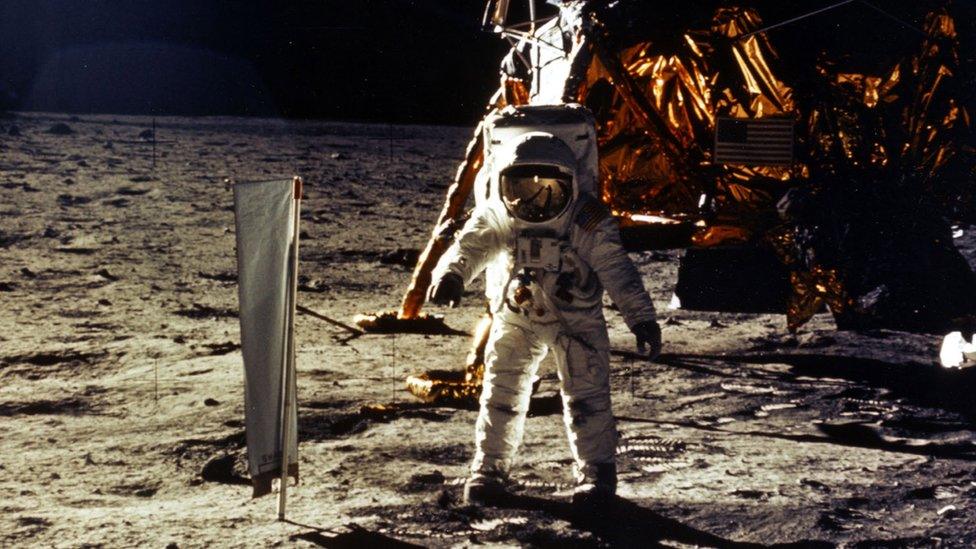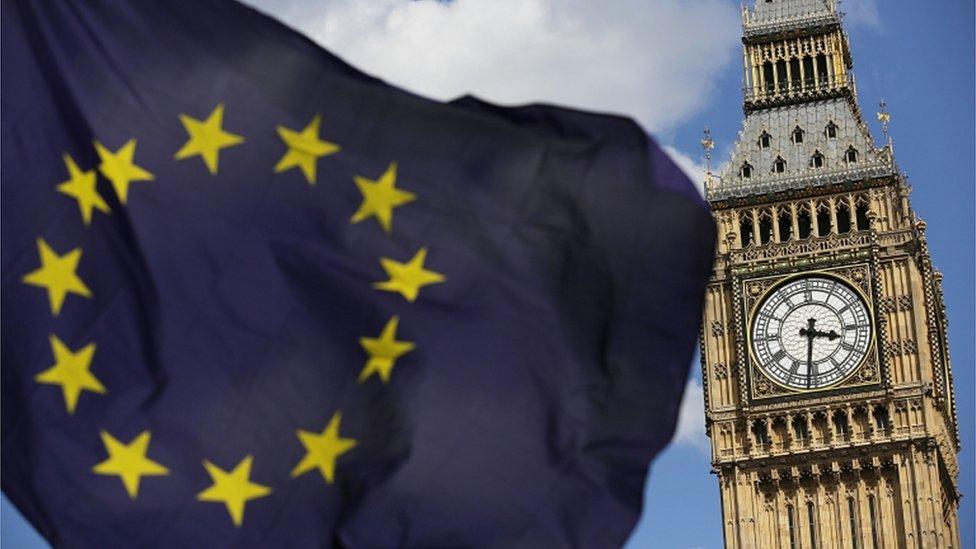Where we are with Brexit - in 300 words
- Published

Brussels, we have a problem
David Davis once said negotiating Brexit was as complicated as a Moon landing. So for those still stuck on the launch pad, here is a very quick guide to what's going on.
We are still on course to leave the European Union on 29 March next year. No-one can agree on what happens after that though.
If the government gets its way, the answer will be very little, in the short-term at least.
Brexit Secretary David Davis - in full Neil Armstrong mode - wants to bring the country in for a soft landing.
Businesses need time to adjust, he says, so he wants a two-year transition period, which will feel very much like staying in the EU.
He wants the UK and EU to agree a deal on that by March.
Then the really difficult bit begins - negotiating a new relationship with Germany, France and the rest of the EU.
Prime Minister Theresa May wants to end free movement of people into the UK.
She also doesn't want the UK to be told what to do by European judges.
But she also wants businesses to be able to trade pretty much as they do now across the EU.
This sounds to some in Brussels like "cherry picking" - not their favourite activity.
They say that the ability to trade across the EU without tariffs is one of the benefits of being a member of the club.
If the UK leaves, they say, it can't expect to have the same terms.
But Mrs May has yet to spell out what she wants in any detail.
Whatever she says is guaranteed to disappoint a section of her party, threatening her already precarious premiership.
But if she doesn't act soon, the EU will start filling in the blanks itself.
It wants a rough outline of a trade deal by this October - to put it to a vote in the European Parliament and get it ratified by the remaining 27 EU members in time for Brexit day.
There will also be a vote in the Commons.
And we haven't even mentioned those campaigning for another referendum...
And for those who want a more in-depth explanation:
- Published1 February 2018

- Published14 August 2017
